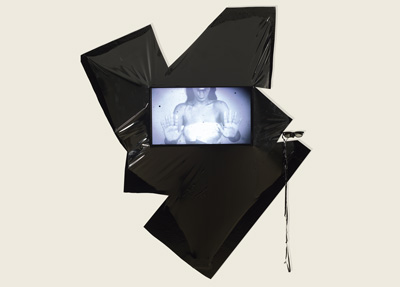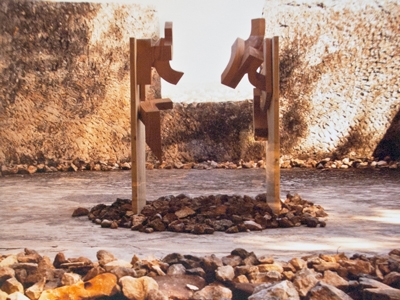The Void and its Opposite
By Carlos Jaime Jiménez
There is a sort of immanent vertigo in the fact of understanding history as part of successive cycles in which the circumstance or specific fact are no longer important but become mere threads of a larger tissue. It is a vision that, depending on the opinion or world view of each individual may be tranquilizing or, on the contrary, terrible, as normally happens with the attempts to establish a mental map of the infinite assumed as physical, historical and ideal space, all at the same time. When a creative attitude connected to such premises is proposed from art, a number of risks and possibilities also arise. How can the discourse be deprived of all superfluous solemnity? How are the poetic content and the metaphysical projection to be assumed with honesty, but without failing to pay attention to the rhetorical pomposity that derives from their excess? How, as a last resort, can the references to a specific context become metaphors liable to be registered –and read– within a wider environment?
The above questions present some of the specific problems handled conceptually by Aryam Rodríguez Cabrera in his artistic work. In it one observes a number of influences that go from the Oriental systems of ideas –mainly Buddhism– to certain symbolic elements associated to the Afro-Cuban religious practices, to mention two examples.
The artist finds support in different methodologies and iconographic resources, always maintaining the nature of the original reference but reformulating or widening the potential of its meaning. In the confluence of symbols and metaphors in the works it becomes evident that, whether it is religion, history or the existential problems of the contemporary individual that are being handled, they seek to communicate a message both local and universal, personal and collective. An example of it is his series Evangelios de nada (Gospels of Nothing) where – more than questioning or exposing the limitations of every social or conceptual system based on immutable values or fixed precepts– the viewer is invited to transcend the act of categorization; more than acceptance or rejection, the purpose is to eliminate any type of normative discourse.
It is necessary to point out the spiritual element associated to the works. Their link to certain philosophical and religious precepts is not restricted to the references, but extends to the own methodology of creation and exhibition of the pieces, and to their relation with the viewer in the exhibition spaces. Even though the act of experiencing, assuming or dialoging with the spiritual content of the works may depend on the willingness and sensibility of the receiver, who may or may not identify himself with said elements, the cognitive value of the pieces is evident. No Martí and No ceiba, among other pieces, express simply and delicately ideas and concepts that in the end are much more complex that what they seem to be from a first reading. The adverb “no”, instead of denying, is used here to subvert the binary understanding be it of the symbol or of the object, inviting to assume it in its full complexity. This, in a certain way, points to a permanent and personal search of the meaning, constantly reformulating it without tying it to any type of pre-established convention.
The same thing happens with the tankas or prayer banners that bear remarkable structural and functional resemblance to the Oriental reference, and whose thematic orientation is nevertheless usually connected in depth to the Cuban context, without restricting itself exclusively to it (Poder sobre poder, No desesperes pradera todo caballo es efímero, Y en el silencio…). In turn, works like El peso de la explotación and No luna show an interest in exploring the quality of the material as receiver of memory and identity. In the former, a piece of wood was used that belonged to the legendary railroad between Havana and Güines, pervaded with the sweat and blood of hundreds of slaves and paid workers with practically the same living conditions. Several thousand one peso coins pile up on top of the piece, the same ones that today circulate in our country. The connotations derived from the objects that form the piece and their capacity to link specific future aspects of our social and economic processes give rise to a powerful critical discourse and echo a call to remember –and not to repeat– the history of pain and suffering that accompanies the construction and development of every nation.
Aryam’s poetic discourse is still developing, but the artist has already clearly evidenced that he does not intend to reach a specific, preconceived place. Therefore, let us hope that his search will continue to produce works that invite to perceive, carefully observe, and finally, question.
Maikel Domínguez and Lisyanet Rodríguez have taken the lid off the soup bowl of a lavish banquet like those that Augusta organized in the pages of Paradiso, only to be shared by the chosen ones.



